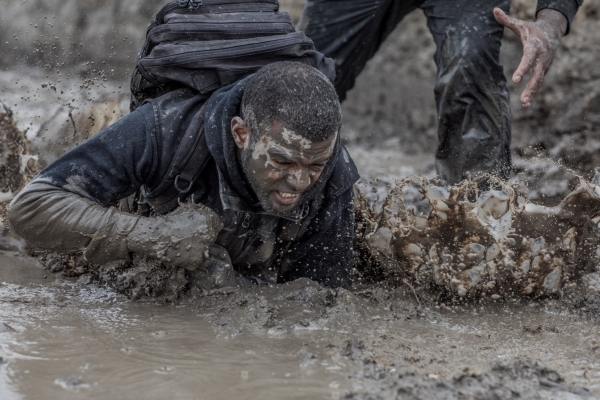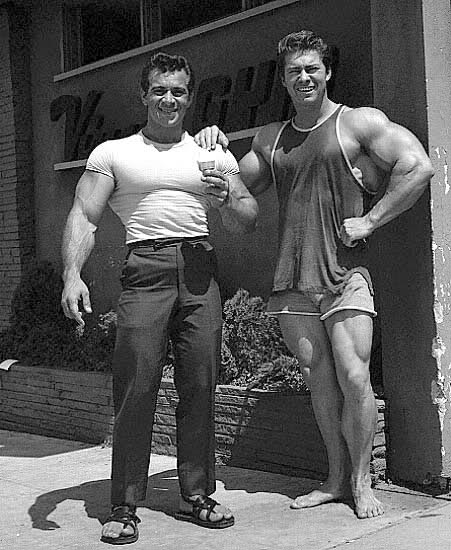Mud Runs and Adventure races have become the next fitness epidemic in the United States and for a good reason.
But if you think you are ‘fit’ enough to tackle one of these races, think again. These races are not for your average weekend gym rat. These are serious and will separate the men from the boys (or women from the girls ☺).
So even before we get into the gnarly 6-week program that I mapped out for you, let’s look at the history of these so-called mud/obstacle runs and adventure racing.
While they could be called the grandfather of all obstacle races, adventure races are some of the most intense, physically challenging endurance events in the world. Most of these events will require the use of various modes of transportation such as horseback, kayak, bike, arms, legs, etc.
In other words, you use whatever means necessary to get you from point A to point B in the fastest amount of time. The term “Adventure Race” was coined by journalist Martin Dugard when describing the passion and challenges conquered by athletes in events such as the Eco-Challenge.
The Eco-Challenge, created by Mark Burnett of the TV show Survivor, was the world’s first adventure race and is considered by many to have put the sport on the map for all athletes looking for something extreme and adventurous to compete in.
Over the course of a decade in the 1990s and early 2000s, the Eco-Challenge was reformatted in an attempt to make events more difficult and more exciting. In this process was the addition of the entirely self-encompassing sport of adventure racing through a mix of multiple different disciplines.
Today, you will find all different races throughout the year in all states and in remote countries around the world. Races like a local charity 5k obstacle course, The Tough Mudder, a 10-12 mile team-oriented obstacle course, to the 4 Deserts Race, a 7 day, 250km foot race across the most extreme terrains on the planet.
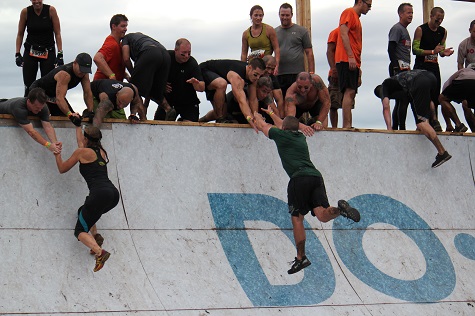
The Requirements
Whatever types of race interests you, there are requirements: physical fitness and mental toughness.
No matter the distance or degree of difficulty presented, you will need to follow a training program that will enable you to not only finish the race but to also look darn good in the photographs dominating the course.
There’s a strong possibility that if you are reading this, you’re already interested in adventure racing. And that’s great! Adventure racing is an experience that you’ll never forget and I guarantee that once you do your first race you will be hooked!
I don’t know about you but I am a competitor. I love to compete. Even if the race isn’t timed or there is no winner, I will still set my watch and run down anyone in front of me just because that’s what I’m driven to do. I know that’s the athlete in me but it’s also a primal instinct of our human design. We hate losing and rightfully so.

Whatever your situation is you will still want to performance at your absolute best. Or maybe you’re a veteran racer and you’ve hit a plateau and just can’t figure out a way to get stronger and faster. Or maybe you just completed a race but had to bail out half way through because you’re training sucked. Regardless of how fit you think you are you will have something to gain from this program.
‘And remember, everyone responds differently to exercise but the main focus is following a set program to achieve your goals. Without goals you are running around in the dark wasting time. Modifications can be done to this program to accommodate your needs. Again, this program is a template for you to use in preparation for an adventure / obstacle race and in no way are we guaranteeing a first place finish or for you to walk away from your training / race without an injury. Adventure race training places great risks of injury on the body simply because that’s what these races are intended for: to push your body and your mind to the extreme and then cover it in dirt and blood. Mother Nature is not forgiving.’
Selecting Your Race
Like I mentioned above, there are thousands of races to choose from but obviously you would want to start local. Do a quick internet search for ‘adventure race in (your city or state)’, ‘mud run’, or ‘obstacle course’ and go from there and select a race that appeals to you and go from there. Depending on where you live, I’m sure there is a least one race within a 1-2 hour drive from you and there’s a good chance it’s a sprint race.
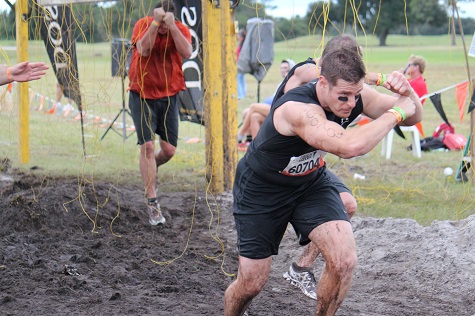
A Sprint Race lasts anywhere from 30 minutes to 2 hours. These races are by far the most popular type of adventure race and also the most beginner oriented. The typical distance for a sprint will be between 3 – 6 miles on foot. Now throughout the course you will be faced with numerous obstacles, some man-made: running through tires, cargo nets, slip and slides, rope swings, vertical climbing walls, etc.
and some will be natural: swimming, mud pits, rocky terrain, rock climbing, etc. Because the races are shorter, teams are closer together and there is a ton of camaraderie and interaction with other racers during the race, I recommend this race to all first-timers to get a feel for the sport.
Many racers, after doing a few sprint races, long for an even greater challenge. The next stage of racing would be a Middle-Distance Race that would last anywhere from 2-6 hours. There are some important differences to know between a 3-mile race and a 13-mile race. Though the disciplines will be similar, the race itself will be much longer (7 – 15 miles) and much more challenging due to the number of obstacles.
The longer the race, the more obstacles you will have to battle and you might even have to use items or objects to finish the race: log carry, team canoes, zip-lines, and maybe even your own bicycle. These races will require your training to be geared more towards endurance simply because you are covering a greater distance. Now within this endurance event, strength is required so neglecting to do any type of strength training will limit you big time on the course.
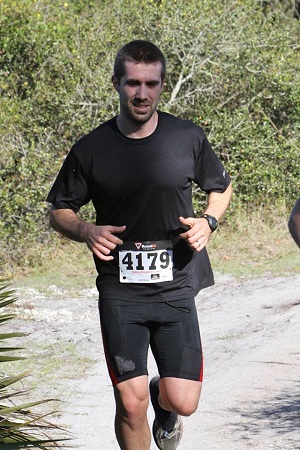
The third type of race would be an Advanced or Extreme Adventure Race. This type of race isn’t for beginners or even those who classify themselves as fit. These advanced races will not be for everyone. These races will be at a minimum of 13 miles of running and that’s on the very low end. Some advanced racers would laugh at the 13 miles just because there are adventure races out there that cover 100+ miles of insane terrain.
Now in order to accomplish a race of this magnitude, man-made obstacles are very few. This is a no-brainer. Could you imagine a 50-mile race having 500 obstacles?! As fun as that would be, it’s nearly impossible for someone to finish that, let alone create that type of race. These extreme races will require you to run, bike, climb/trek, swim and paddle.
Since the more advanced races demand a much more personalized and thought out program, the two types of racing that we will focusing on in this program are the Sprint and Middle-Distance events. These races don’t necessary require you to go out and train 20-30 hours a week in preparation for your race. In reality, your week will look something like this if you stick to this program: 2-3 sessions per metabolic conditioning (a.k.a. metcon); 2-3 strength / power sessions; and 1-2 endurance-based sessions.
Having this format will allow you to successfully train all the systems of your body to properly prepare you for your race. Here are two sample weeks that would be for A) first-timer with little exercise background training for a 3-mile mud run and B) very active individual preparing for a 7-mile obstacle course with extensive exercise background:

As you can see that the work load is much greater in column B simply because that individual is coming from a much different background and the race that this athlete is training for is more than double the distance and obstacles. Again, this is a template that you can use to incorporate into your workout in order to fit your needs. The main focus is hitting all of the energy systems in the body but allowing the body to properly recover. Notice that each day there is a different focus for the novice athlete but for the advanced athlete you will see 2 sessions brought together. (i.e. strength in the morning, endurance or cardio in the evening). This is because strength can’t make you an endurance athlete and cardio can’t make you a strength athlete.
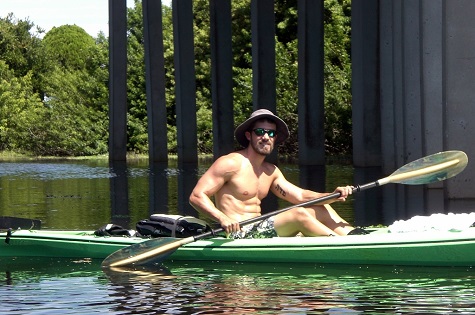
“The will to win, the desire to succeed, the urge to reach your full potential… these are the keys that will unlock the door to personal excellence.” — Confucius
In this 6-week program I can guarantee TWO things will happen. First, you will thoroughly enjoy the mixture of complex and supplemental movements to attack every system and every muscle in your body. Second, YOU WILL GET STRONGER AND FASTER! This plan is based on big, functional movements that are not boring and definitely not found in most corporate settings.
Click Here for Your FREE 6-Week Training Guide for Obstacle Races & Mud Runs
By Brian Klepacki, MS, CSCS, CISSN, FMS

